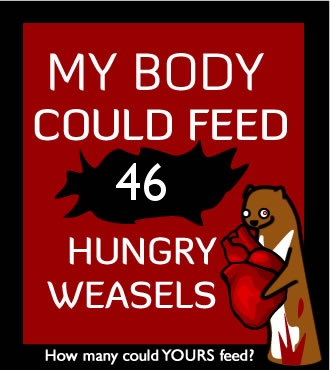In the wake of the Influena A-H1N1 chaos, you must have known I’d get around to writing about germs eventually. Hopefully most of us have calmed down now, and been able to put the H1N1 threat into the proper context and realized that, like seasonal flu, it tends not to affect healthy individuals all that severely, and it is best prevented with the same old remedies Mom taught you of good hand-washing and covering your mouth when you cough or sneeze. And, if you are sick, with any ailment, stay home and don’t spread it. But, it gets me around to the concept of germs, or more specifically, viruses, bacteria, and other tiny micro-organisms (oh my!).
Viruses, like H1N1, are just tiny packages of genetic material wrapped in a cozy protein coat. They reproduce inside host cells (i.e., you) using the hosts’ genetic machinery (i.e., yours). They make thousands of copies of themselves and then spread, implementing their little genetic programmes. Viruses do not always cause disease, but they usually cause an immune response, and once your body has produced that response you often have lifetime immunity to the virus (notable exceptions would be the herpes virus, hepatitis B, etc which elicit an incomplete immune response and remain with the host for life). Vaccines typically contain killed virus in order to cause the body to produce the desired immune response, when then protects the host from future invasions by this particular viral agent. Viruses are not killed by antibiotics, specifically because they are not “biotic.” Viruses lack the components of living cells that make them susceptible to antibiotics. Viruses, however, are the most abundant “life” form on the planet.
Bacteria are living cells. They live everywhere on earth, and we are able to culture only a tiny fraction of them. The vast majority are completely harmless, many are quite helpful, and a special few can be devastating. Most are easily dispatched by our immune system, and those that aren’t can sometimes be killed by antibiotics (but, not every harmful bacteria has a known antibiotic, and many are evolving resistance to known antibiotics). There are perhaps ten times more bacterial cells in your body than human cells. You are your own walking bacterial ecosystem.
A recent study [Science, 23 May 2008, p. 1001] looked to quantify the numbers of different types of bacteria living on the human body, and where. They swabbed all the places you might normally think of as well as some you probably don’t want to think of (mostly external), and the big winner? Not what you might think…it was our forearms; 500 to 1000 species of bacteria live on our skin.
Other tiny biological structures include prions, which are proteins that re-fold themselves to adopt a shape that causes them to interfere with normal protein function. And, fungi, which come in many forms, ranging from microscopic to the size just right for veggie pizza and portobello burgers. Mold is in this group, which is good for cheese, bad for heating and ventilation ducts, and pretty useful as a class of antibiotics.
When it comes to these tiny organisms, we humans are greatly outnumbered. Just a little humbling, isn’t it?
Subscribe to:
Post Comments (Atom)






No comments:
Post a Comment